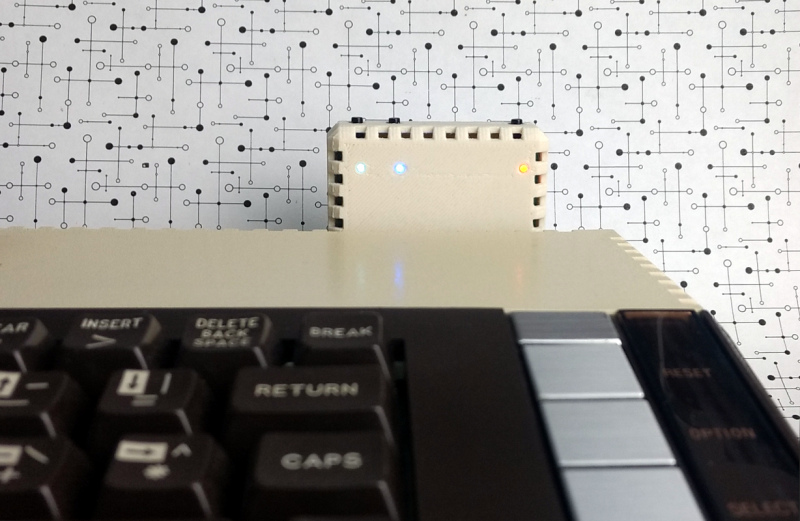Universal Serial Bus, or USB, is so ingrained in modern computing that it’s hard to imagine a time without it. That time did exist, though, and it was a wild west of connector types, standards, and interfacing methods. One of the more interesting interfaces of the time was the SIO system found in 8-bit Atari computers which ended up sharing a lot of the features of modern USB, and its adaptability is displayed in this modern project which brings WiFi, Bluetooth, USB, and SD card slots to any old Atari with an SIO port.
The project is called FujiNet and it uses the lightweight protocol of SIO to add a number of modern features to the 8-bit machine. It’s based on an ESP32, and the chip performs the functions of a network adapter by bridging WiFi and Bluetooth to the Atari. It does this by simulating drives that would have potentially been used on the Atari in its time, such as a floppy disk drive, an RS232 interface, or a modem, and translating them to the modern wireless communication protocols. It even has the ability to emulate a printer by taking the output of the print job from the Atari and converting it to PDF within the device itself.
Not only does this bring a lot of functionality to the Atari, which you may be able to use to view sites like retro.hackaday.com, but the FujiNet is housed in a period-appropriate 3D-printed case that matches the look and feel of the original Atari. If you need a more generic solution for your retrocomputing networking adventures that isn’t limited to SIO, we recommend grabbing a Raspberry Pi to handle that.
Thanks to [Gavin] for the tip!
















Joe Decuir invented SIO and also worked on the development of USB 1.0 and 1.1. https://computingpioneers.com/index.php/Joe_Decuir
Nice fact! Thanks
Device independent I/O is one of the bright spots in 8 bit Atari computers.
Because of it, programs written to the SIO routines in ROM can work with new devices made today.
Each device had a handler
K: Keyboard
D: Disk
C: Cassette
Etc.
People are playing games over the Internet on this thing.
Cool project.
Not only that, but new devices can be made and injected into the running system. We do this for the N: device, which converts network traffic to an I/O channel that the Atari can understand, through various protocol adapters (TCP, UDP, HTTP, HTTPS, FTP, TNFS, soon SSH and more), to allow the Atari to access remote services and filesystems easily, even from BASIC. Because we can easily talk TLS, and because we are embedding a both a JSON and a XML parser, #FujiNet can do something no other 8-bit network adapter can do: participate on the modern internet as a first class citizen.
Although Raspberry Pi may be more powerful than ESP32, it is the software that matters.
That’s why the #Fujinet offers much much more than any other modern interface (including RPI).
I agree and the ESP32 is a fraction of the cost.
Link to the VCF East presentation last weekend:
https://www.youtube.com/watch?v=OGcoXPkPjs8
The printer emulation is achieved thanks to the ESC/P and ESC/P2 convertor which we developed for the Retro-Printer module – http://www.retroprinter.com – we were happy that our conversion software was chosen for this project.
No, we didn’t use RetroPrinter.
Jeff Piepmeier (@jeffpiep) did all of the implementations from scratch using relevant documentation, and even did a PDF implementation from scratch.
You can see the implementation, here. https://github.com/FujiNetWIFI/fujinet-platformio/blob/master/lib/printer-emulator/epson_80.cpp